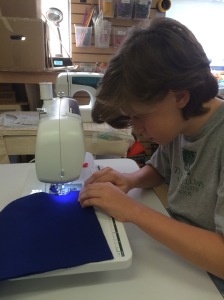What is the mind? What can we do to help kids develop a resilient mindset when facing life’s challenges?
These perplexing and provocative questions were just two of many raised and discussed at the most recent event in our annual Ideas@TheWillows speaker series, led by acclaimed UCLA professor and Executive Director of the Mindsight Institute Dan Siegel.

One of the things that I truly value about working at The Willows is our community’s willingness to engage in a thoughtful exchange of ideas with extraordinary people like Dr. Siegel. I first became aware of his work in my early years of fatherhood, when my wife and I read his book The Whole-Brain Child: 12 Revolutionary Strategies to Nurture Your Child’s Developing Mind. Later, I became aware of his efforts to introduce mindfulness into schools through his Mindsight Institute’s MindUp curriculum that we’ve used parts of with middle school students at our school.
In his wide-ranging and lively talk, Dr. Siegel shared findings from research about resiliency, which he linked generally to the concept of integration in brain research. Adults and children who are adept at integrating the various systems of the brain in a harmonious manner are better suited to facing life’s challenges without becoming overwhelmed or disconnected. To illustrate this at one point in his talk, Siegel asked for volunteers – specifically, people who sing in choirs (including our Director of Library Services Cathy Leverkus) – to come on to the stage with him. He gave his singers various directions to demonstrate the results of an integrated brain (harmony, where different singers worked together towards a common goal) versus a non-integrated brain (chaos, where different singers covered their ears and only sang their own song). 
Besides sharing essential brain research for everyone to ponder, Siegel also underscored several helpful takeaways specifically for parents in attendance. According to Siegel, the most powerful finding from parenting research that many are not aware of is the need for parents to make sense of their own lives first – in his words, “It doesn’t matter what happened to you, it’s how you make sense of it.” If we neglect to engage in this process of looking inward and examining our lives, we run the risk of sending mixed messages to our children as we direct them to make good choices in their lives.
Additionally, he mentioned several times the importance of parental presence. I have found myself repeating one line from his talk several times on this subject:
The more present you are, the more you are willing to learn about who your children are versus who you want them to be.
In Siegel’s view, modern parents’ preoccupation with a future destination for their children often leads them to send messages that provoke shame, which he defined as the opposite of resilience, as well as encouraging children to compete with each other instead of “competing with the world’s problems.”
Afterwards, I debriefed with my colleague Andrea, who is part of a team of teachers at The Willows working to implement and strengthen our school’s RULER emotional intelligence program from the Yale Center for Emotional Intelligence. One connection she made between his message and our school’s work with mindfulness and emotional intelligence was Siegel’s emphasis on the need to look inward, to be aware of this inner world that we all need to connect to in order to recognize and regulate the energy associated with our emotions. Clearly, this message applies for adults and students alike in our community.
One final note: Siegel did give an answer to our initial question above – “What is the mind?” – which I have to share (I would recommend reading one of his many books on the subjects of mind for a detailed explanation:)
The mind is the embodied and relational self-organizing process that regulates informational flow between ourselves and others and the planet.

Lisa Rosenstein, Head of School, Dr. Dan Siegel, and Christina Kim, Director of Student Life













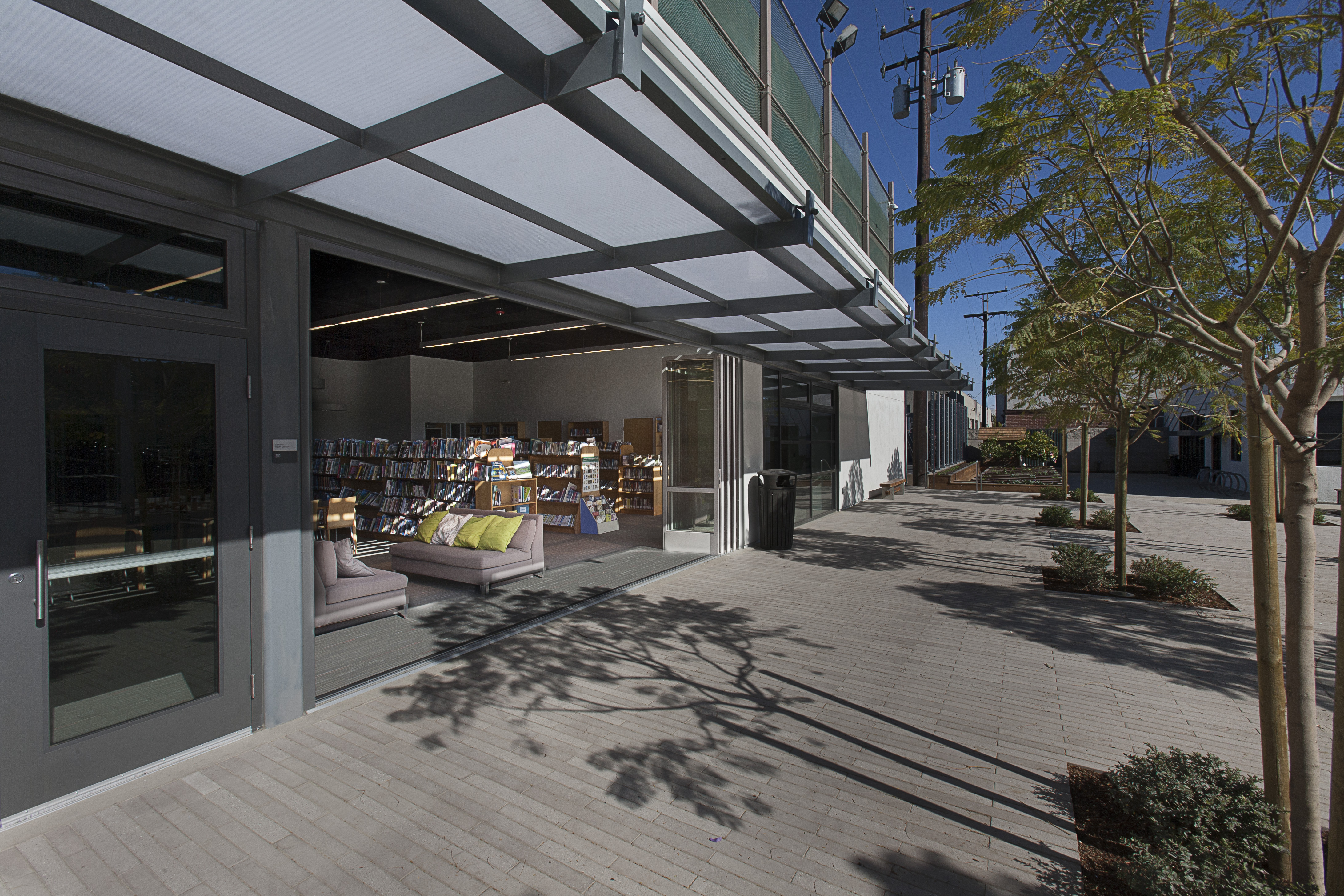
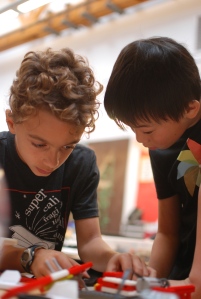 and I were aligned philosophically on the need for learning commons for elementary, middle, and college students with comfortable, flexible spaces to learn and collaborate as a group and study individually. Like Berkeley, our own Director of Library Services, Cathy Leverkus, has been very forward thinking, envisioning our library as a communal space, adaptable and ready to offer differentiated learning and new configurations that best meet our students’ needs in our constantly changing world.
and I were aligned philosophically on the need for learning commons for elementary, middle, and college students with comfortable, flexible spaces to learn and collaborate as a group and study individually. Like Berkeley, our own Director of Library Services, Cathy Leverkus, has been very forward thinking, envisioning our library as a communal space, adaptable and ready to offer differentiated learning and new configurations that best meet our students’ needs in our constantly changing world.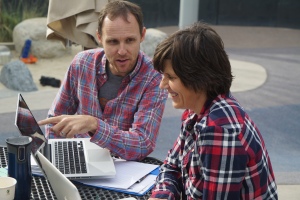
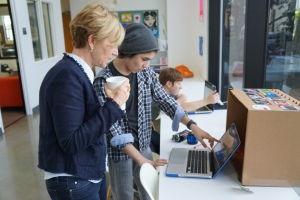 We share, question, and grow together. Our learning commons enhances this collaboration, which is a hallmark of The Willows educational approach, and is instrumental in shaping the soul and culture of our school.
We share, question, and grow together. Our learning commons enhances this collaboration, which is a hallmark of The Willows educational approach, and is instrumental in shaping the soul and culture of our school.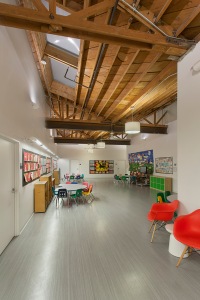 The space is almost museum-like with high walls and skylights. The light and air are conducive to learning.
The space is almost museum-like with high walls and skylights. The light and air are conducive to learning.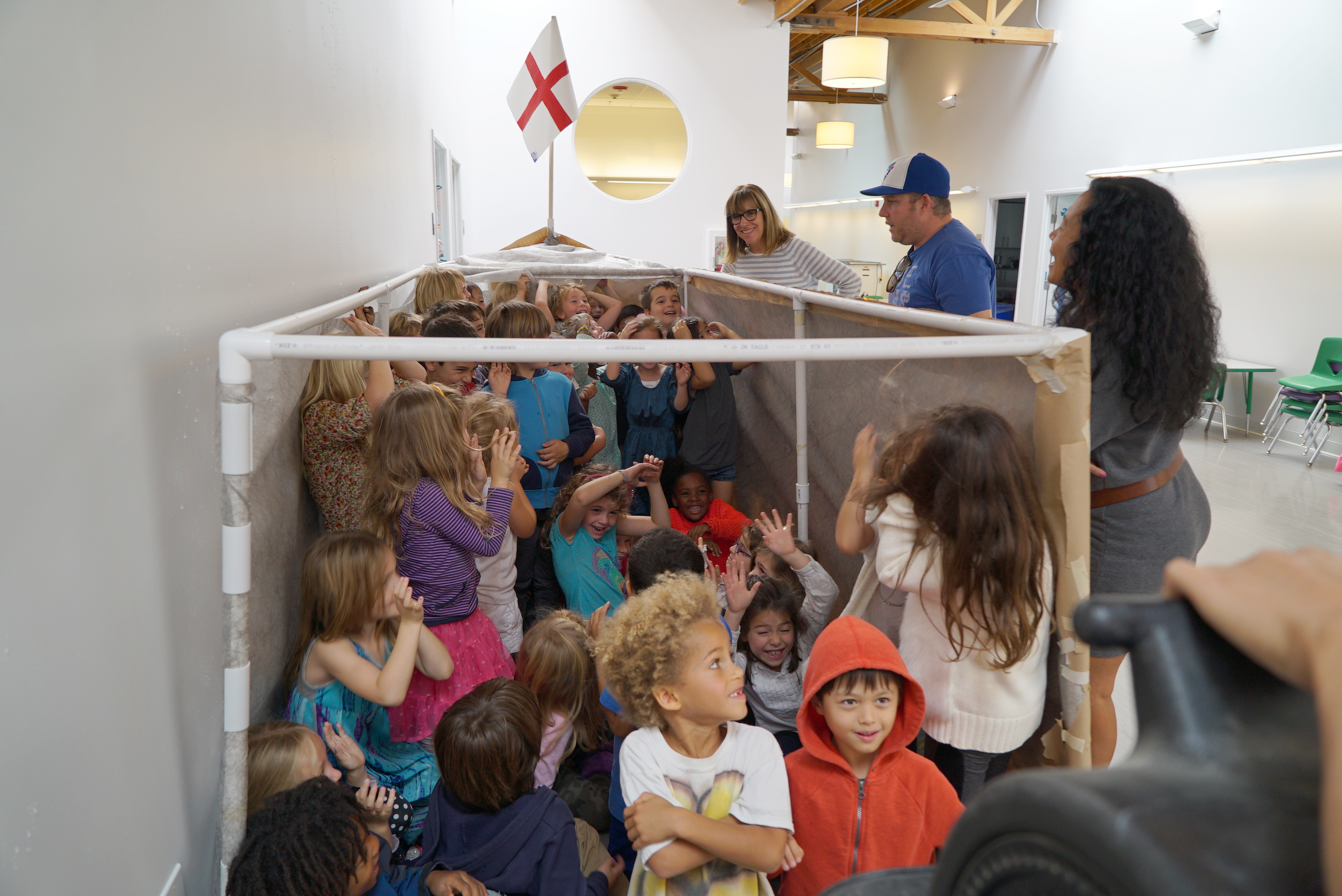 An example is the Kindergarten Maker replica of the Mayflower complete with wind machine, which would be impossible in a classroom, but is an exciting learning experience in the Willows 1 common space. All our spaces are intentionally flexible offering a myriad of learning experiences and cross-disciplinary and multi-age opportunities. In our learning commons, our middle school students often buddy with our youngest students assisting in hands-on projects that are the very heart of our DK-8 model, building empathy and offering leadership opportunities.
An example is the Kindergarten Maker replica of the Mayflower complete with wind machine, which would be impossible in a classroom, but is an exciting learning experience in the Willows 1 common space. All our spaces are intentionally flexible offering a myriad of learning experiences and cross-disciplinary and multi-age opportunities. In our learning commons, our middle school students often buddy with our youngest students assisting in hands-on projects that are the very heart of our DK-8 model, building empathy and offering leadership opportunities.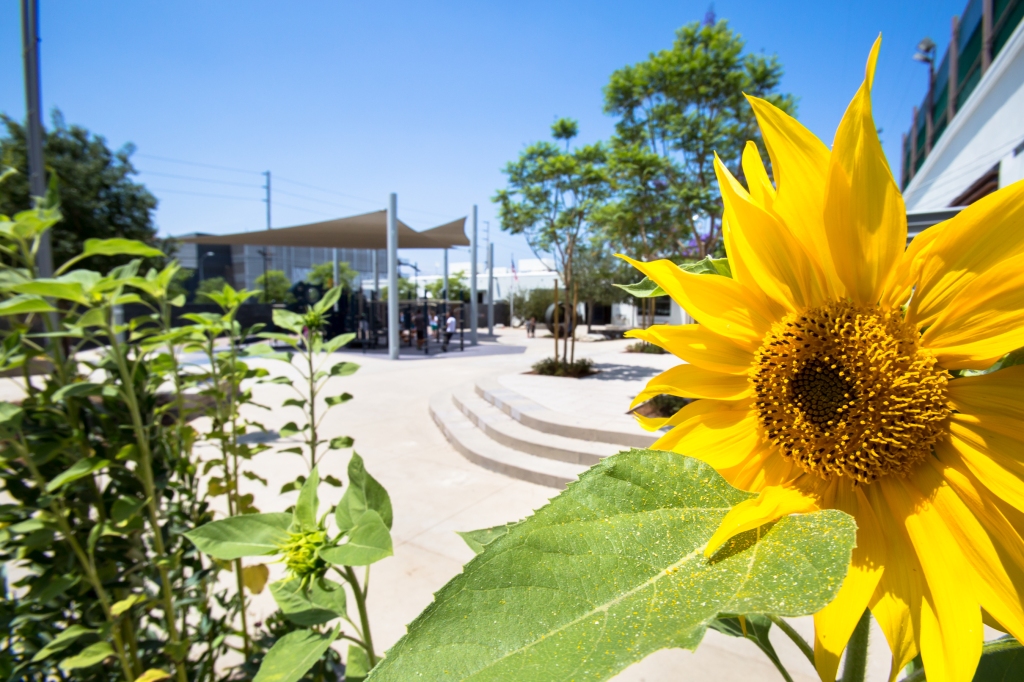

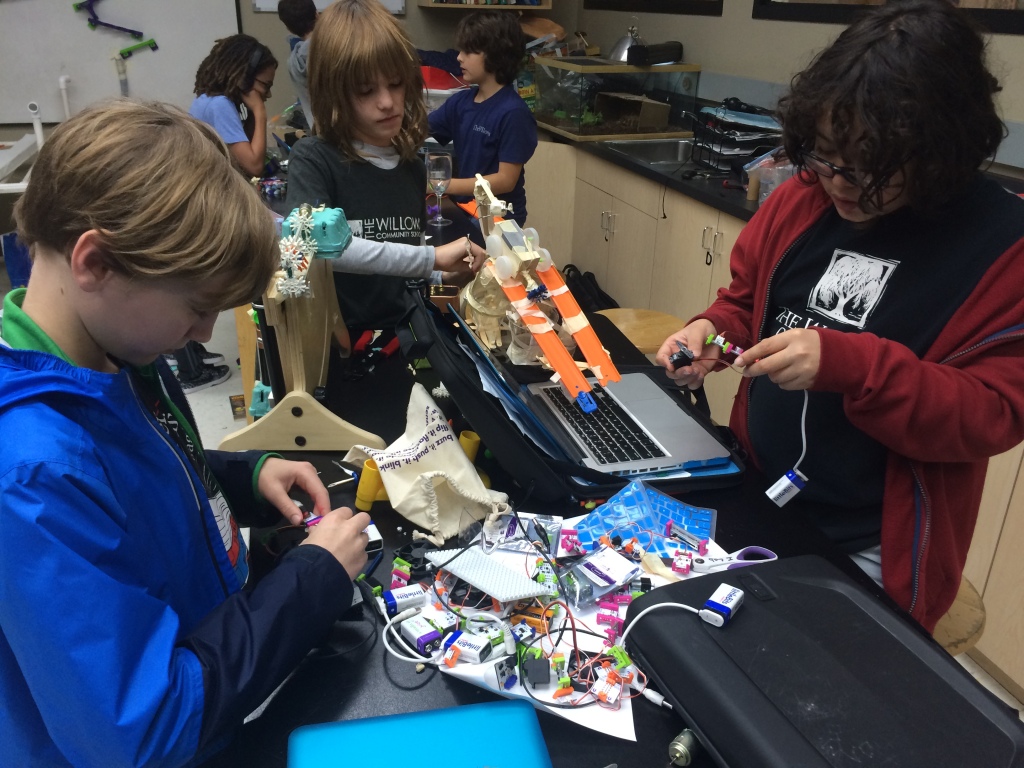
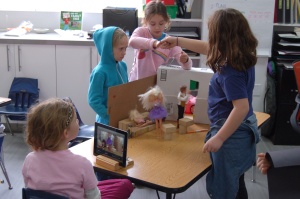 With unprecedented amounts of time, our students were able to build real expertise, often with new skills or concepts. Immersed in their projects, they were more willing to take risks, to persevere through difficulties, to collaborate and problem-solve with peers, and to see the true value in what we call “hard fun.”
With unprecedented amounts of time, our students were able to build real expertise, often with new skills or concepts. Immersed in their projects, they were more willing to take risks, to persevere through difficulties, to collaborate and problem-solve with peers, and to see the true value in what we call “hard fun.”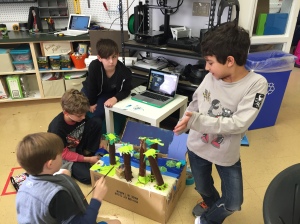
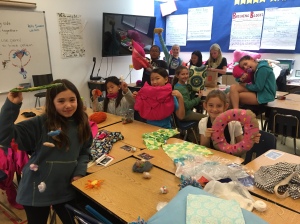 Ultimately, in my mind, time and engagement go hand in hand. Without the time to really dive deeply into something, engagement will always remain superficial while everyone moves on to the next regularly scheduled block of learning. When children are shown that educators truly value their strengths and interests and are willing to give them time to immerse themselves in meaningful projects, they really rise to the occasion.
Ultimately, in my mind, time and engagement go hand in hand. Without the time to really dive deeply into something, engagement will always remain superficial while everyone moves on to the next regularly scheduled block of learning. When children are shown that educators truly value their strengths and interests and are willing to give them time to immerse themselves in meaningful projects, they really rise to the occasion.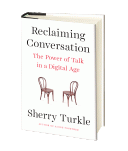 and
and 
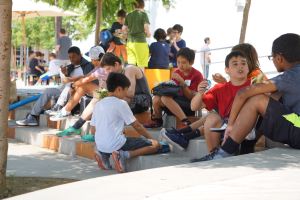 Balance is a word you hear often around The Willows. We are a balanced, progressive school. Tradition is balanced with innovation. Academics, the arts, athletics, and social emotional development are balanced in our educational program.
Balance is a word you hear often around The Willows. We are a balanced, progressive school. Tradition is balanced with innovation. Academics, the arts, athletics, and social emotional development are balanced in our educational program.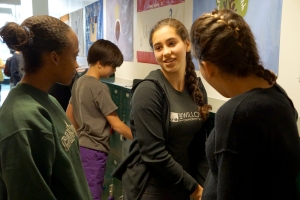 Questioning, deep critical thinking, and creative inquiry, and sharing this as a group, is accentuated in all our classrooms. Walk through our hallways and glance in any classroom and you will see that conversation is thriving and technology is integrated effectively and appropriately.
Questioning, deep critical thinking, and creative inquiry, and sharing this as a group, is accentuated in all our classrooms. Walk through our hallways and glance in any classroom and you will see that conversation is thriving and technology is integrated effectively and appropriately. people – and as we identify with the members of the club, we begin to establish our own sense of identity:
people – and as we identify with the members of the club, we begin to establish our own sense of identity: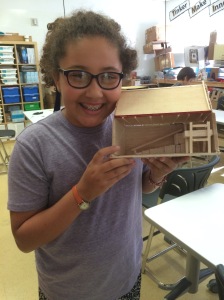 time, two lunch periods and two afterschool sessions, where students are invited to work alongside fellow makers and maker teachers, often learning new skills and developing deeper expertise with familiar tools and programs.
time, two lunch periods and two afterschool sessions, where students are invited to work alongside fellow makers and maker teachers, often learning new skills and developing deeper expertise with familiar tools and programs.